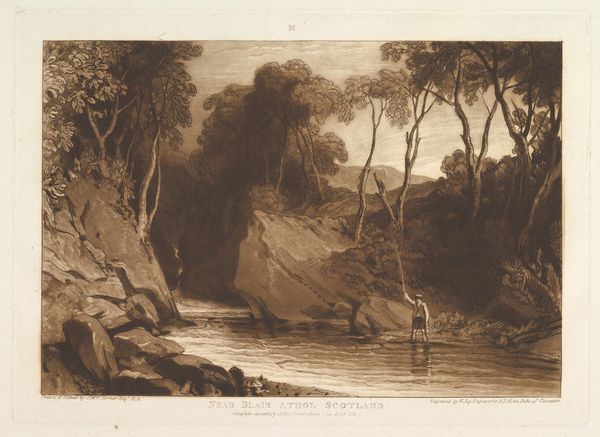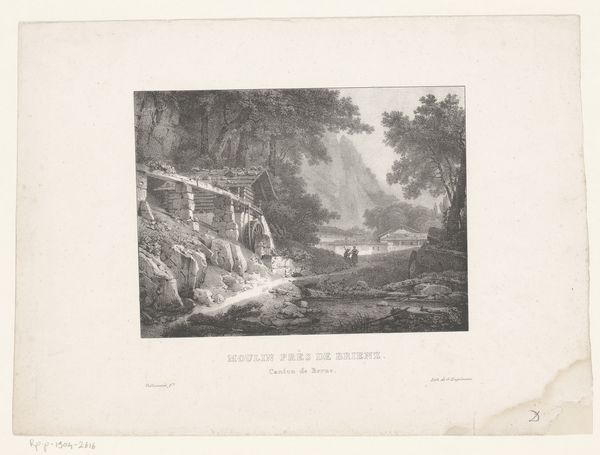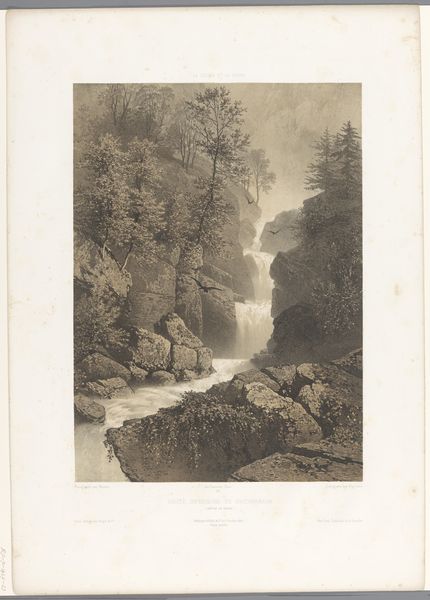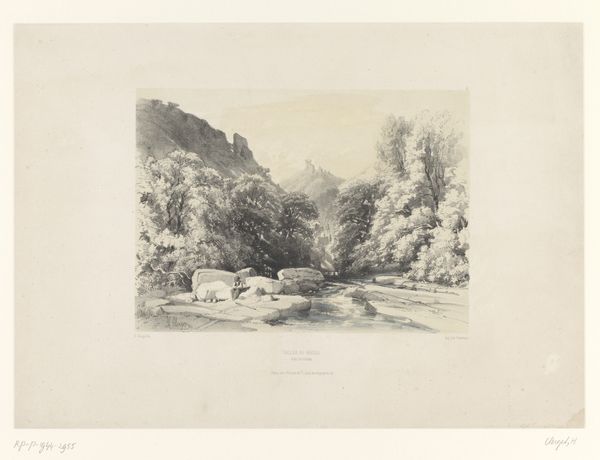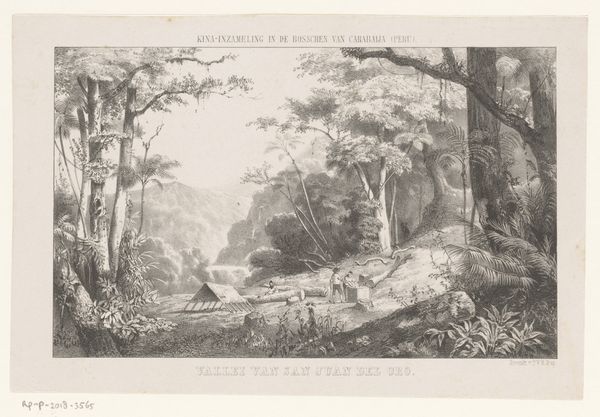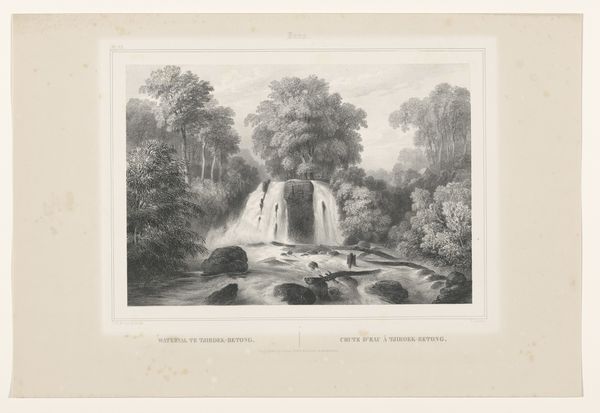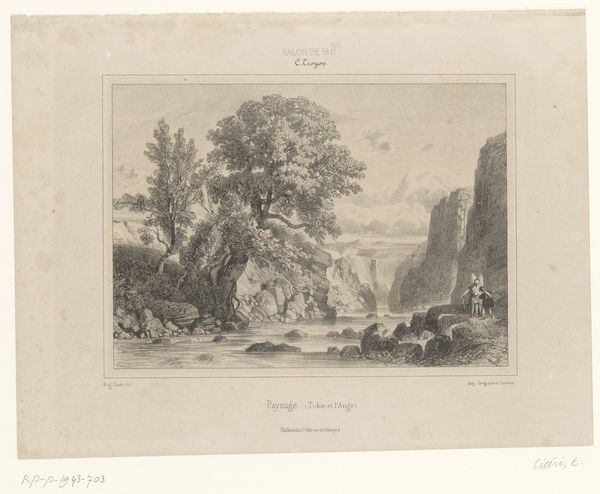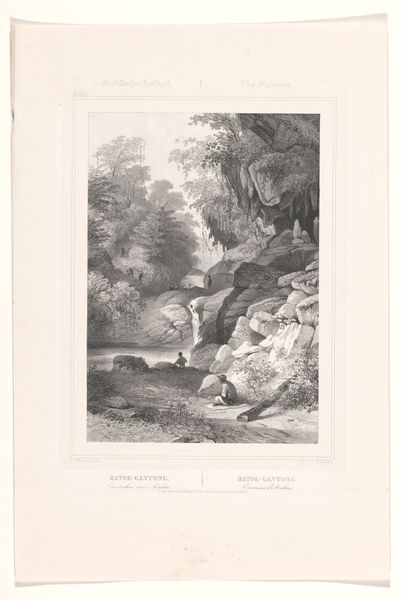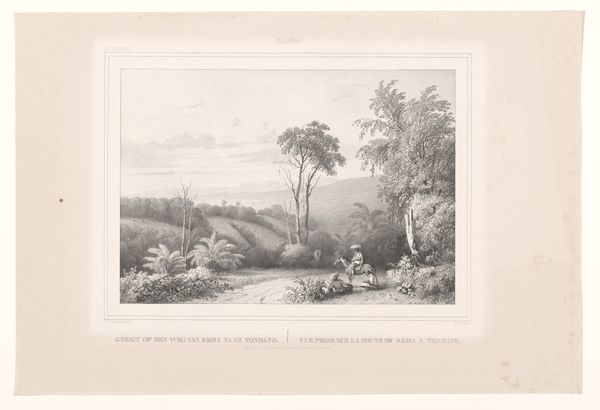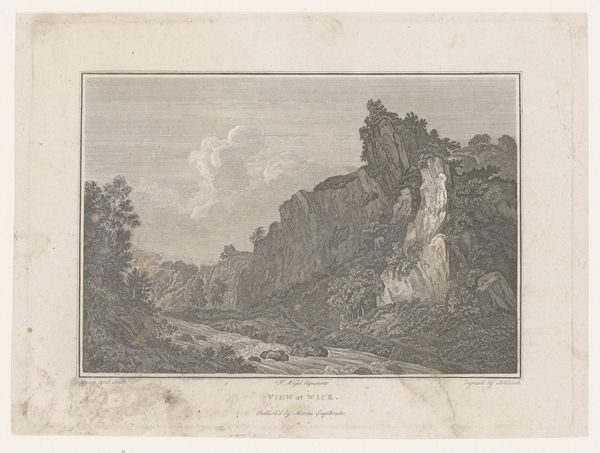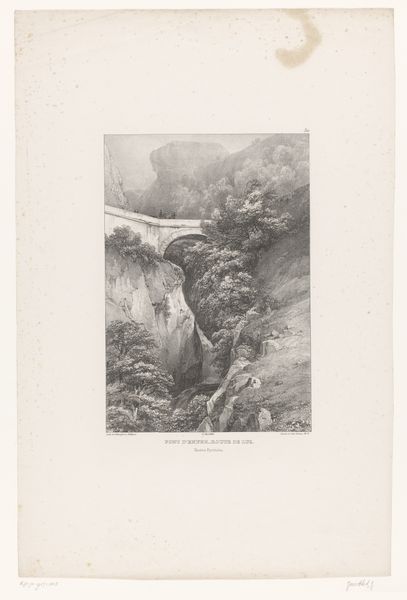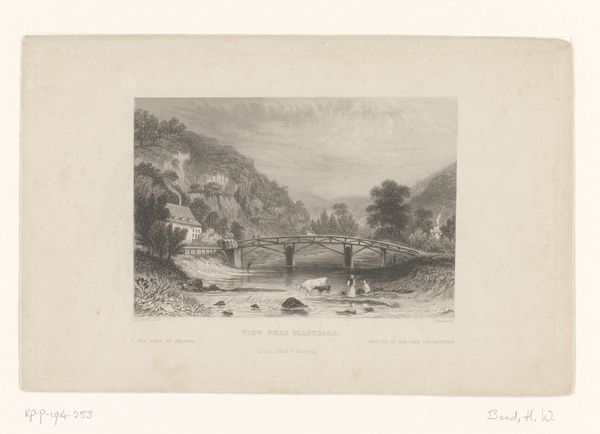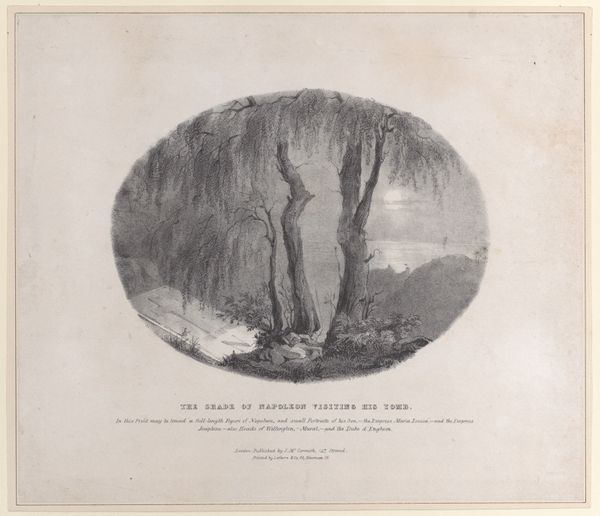
Dimensions: height 293 mm, width 402 mm
Copyright: Rijks Museum: Open Domain
Eugène Cicéri made this lithograph, "Wandelaars bij een bergbeek en ijzerhoudende bron," using limestone and grease-based crayon, sometime in the 19th century. Lithography is inherently about surface. The artist draws directly onto the stone, and the image emerges from the contrast between treated and untreated areas. Here, Cicéri masterfully exploits lithography’s capacity for capturing texture. Look closely, and you’ll see that the tonal variations create a sense of depth and volume. The process also has social implications. Lithography made images more widely available at a lower cost, influencing politics and consumption. These prints were not produced in the same way as singular handmade artworks such as paintings or sculptures. Instead, lithography involved industrial materials, and the division of artistic labor, where some prepared the stones, others drew the image, and others printed them. Paying attention to such details is key to understanding art's broader cultural significance and relationship to labor, politics, and consumption.
Comments
No comments
Be the first to comment and join the conversation on the ultimate creative platform.

